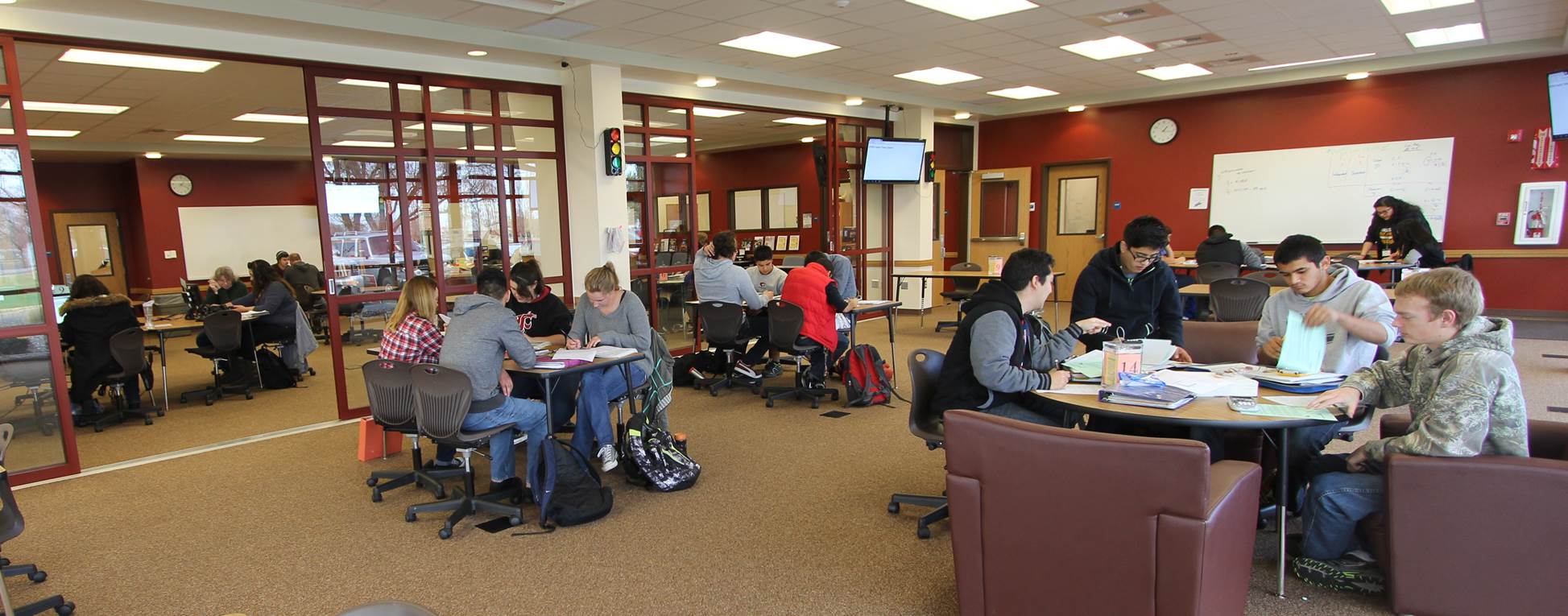BBCC creates new ‘STEM culture’
A new “STEM culture” has emerged at Big Bend Community College as a result of a federal grant now in its fifth and final year.
Video by: Alondra Silva-Gutierrez
The college has recorded a 200-percent increase in student use of the STEM Center this year. With glass walls and abundant natural light, the center provides 62 hours per week of tutoring and supplemental instruction. Demand is so great, the center is open on Sundays.
The $4.4 million U.S. Dept. of Education Title III Grant for Hispanic Serving Institutions (HSI) helped the college provide new resources for students enrolled in science, technology, engineering, and math (STEM).
College–level math courses were redesigned, new advising strategies were implemented, and pre-engineering pathways were developed to change the way students feel about STEM. Changes in the ways students access academic support have had a huge impact, according to college officials.
The college has greatly exceeded the goal of the grant to get more Hispanic students enrolled in STEM programs. There were 24 Hispanic students enrolled in STEM programs at BBCC in 2008-09. By 2014-15, that number increased to 473 Hispanic students enrolled in STEM classes, according to college officials.
Distance (online) STEM enrollment increased from 150 FTEs in 2008-09 to 428 FTEs in 2014-15, again greatly exceeding the grant’s target.
Study groups are common in the STEM Center. They are not quiet. This is not the library. “It is a healthy, vibrant learning environment,” said Sarah Adams, Math Instructional Specialist. “Students are encouraged to be engaged.”
Tutors roam the STEM Center helping students with math, biology, chemistry, physics, environmental science, and engineering coursework. Math/science instructors schedule office hours in the center to meet with
students at round tables. Supplemental instruction is taught by advanced students, while calculus students sit at a row of computers preparing for a test at the other end of the room
Students write equations with markers on the glass walls to solve problems related to math, science and more (then wipe the glass clean). “It is the only place on campus where students can write on the walls and not get in trouble,” said Rafael Villalobos, Jr., STEM Support Specialist. “It gives students a sense of ownership of this space.”
The college used the grant to implement the pre-college math model known as Emporium, which has received widespread recognition for greatly increasing BBCC student success in completing developmental math courses.
The computer software-based Emporium model helped increase student success rates in developmental math from a little less than 50 percent to nearly 80 percent. The lab has computers for 62 students with up to seven sections offered per quarter.
“Math is a gatekeeper for so many professions,” said James Sauceda, STEM Grant Director. “If a student can’t pass college-level math, they can’t be a nurse, an accountant, a computer technician, or an engineer.”
It is common for BBCC students in the Emporium lab to pass two developmental math classes (10 credits) in one academic quarter while paying for one five-credit class–helping students save time and money. As more students pass developmental math, more students enroll in college-level math classes.
BBCC has partnered with the engineering teams of local industries like Genie, REC, and SGL Automotive Carbon Fibers to better inform students of local STEM opportunities and occupations.
“There are many more STEM jobs in the local economy that have come with industrial diversification,” Sauceda said. “Our students can become engineers and get a job near their home town.”
This fall, enrollment in engineering physics at BBCC is at an all-time high. The college had waiting lists for calculus classes for the first time in its history in the fall of 2014, so more calculus sections were added.
Sections of pre-calculus I increased from three to 11, sections of pre-calculus II increased from one to five, and sections of statistics classes increased from four to 12.
Other STEM Center services include educational planning, assistance in applying for scholarships, mentoring, and guidance for transferring to a university.
BBCC is eligible to receive Title V grants for Hispanic Serving Institutions (HSI) because of the demographics and income levels in its service district population. HSI grants have goals and strategies for helping more Hispanic students complete college degrees. The support services and benefits derived from HSI grants are available to all students and residents of BBCC’s service district.


